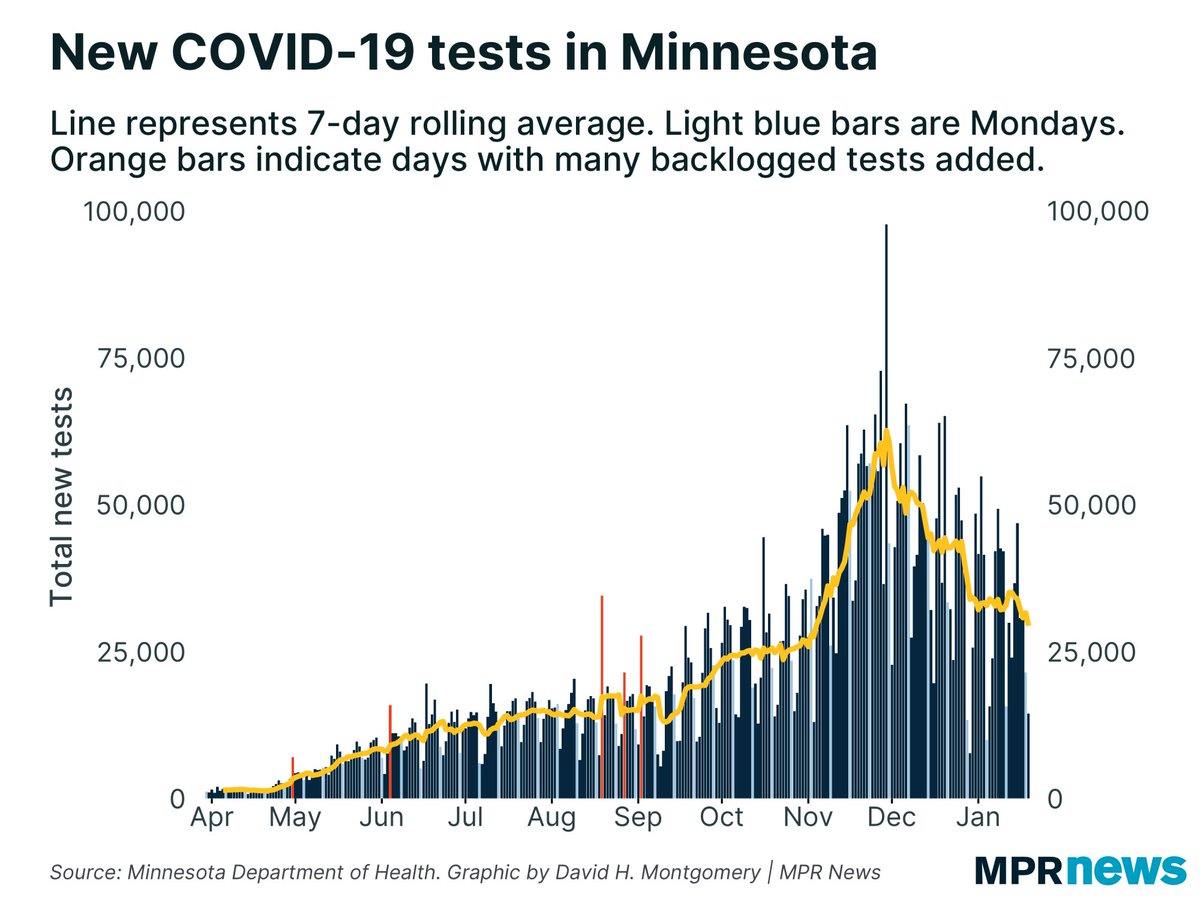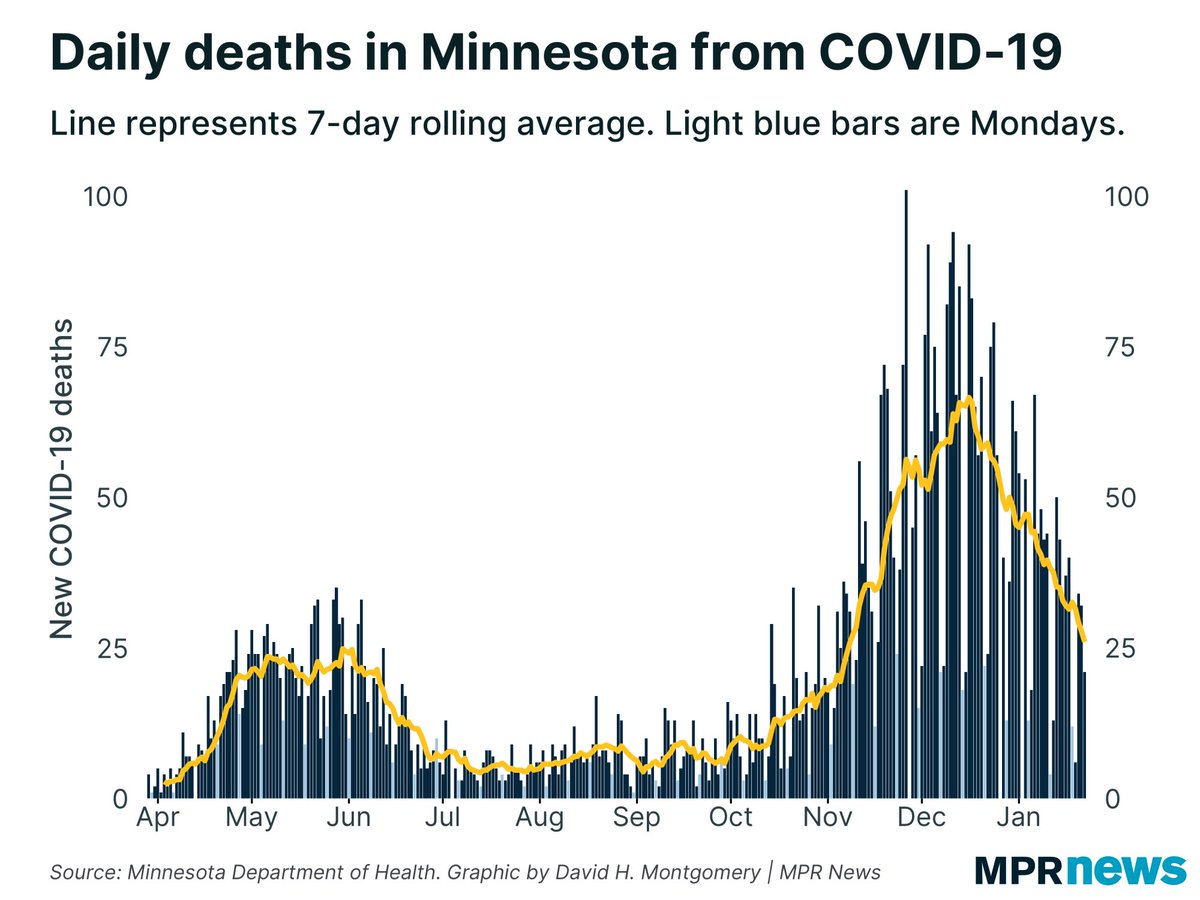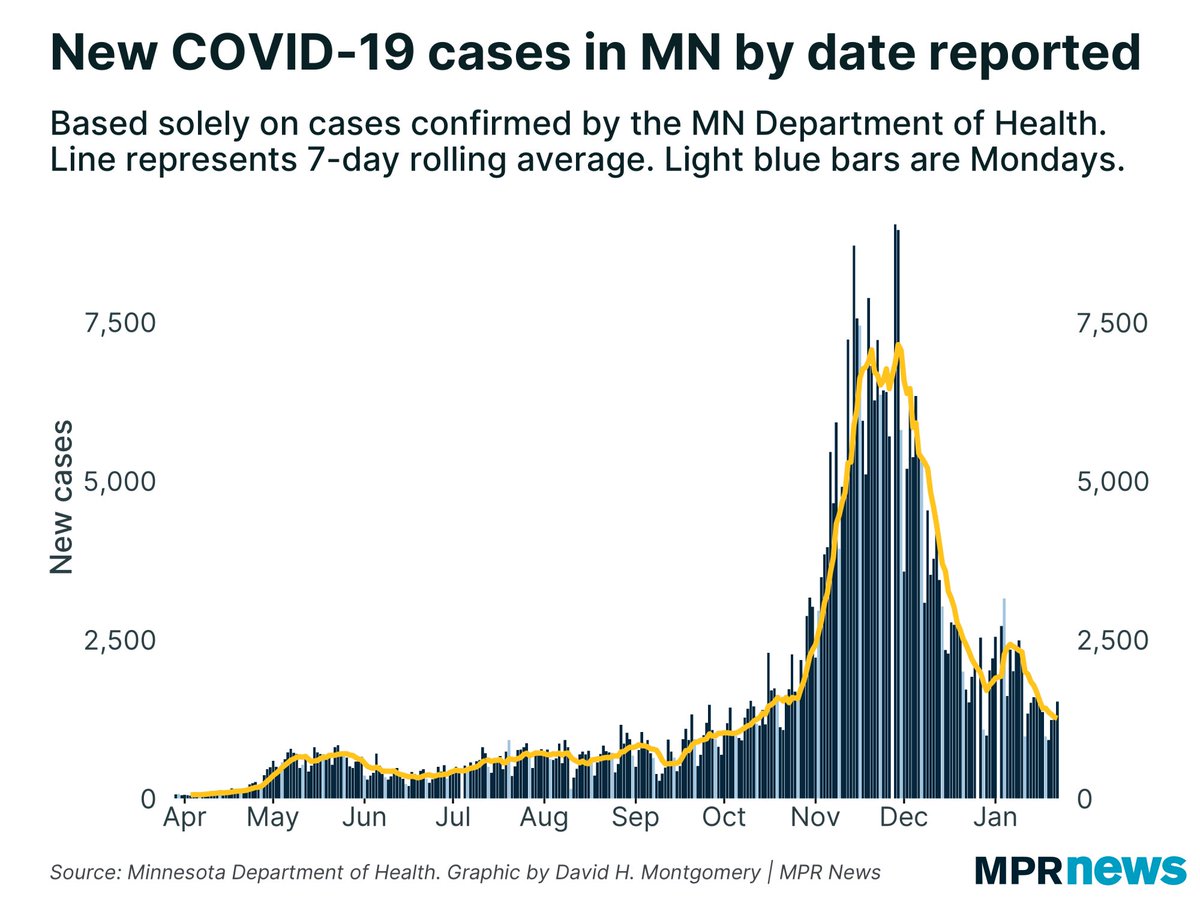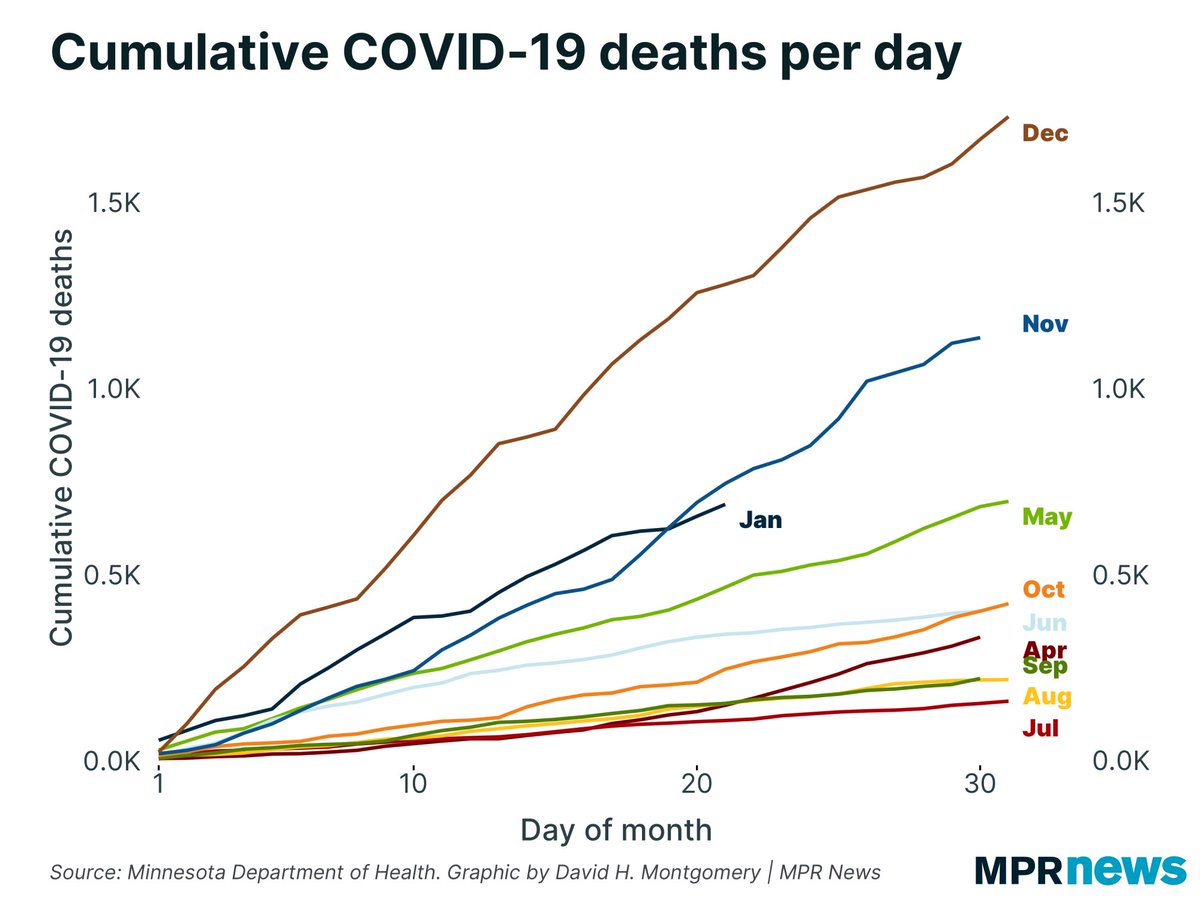
Alright, America has a new president, but #COVID19 stats keep on coming, and so do the graphs.
Minnesota reported 34 additional #COVID19 deaths today. That’s down from 50 last Wednesday (but possibly is nudged down by the holiday Monday). The 7-day average is down to 29 deaths per day — the first time Minnesota has averaged fewer than 30 COVID deaths per day since Nov. 10. 

An extra 1,237 newly reported cases is down from 1,504 last Wednesday. The 7-day average is down to 1,324 cases per day, the lowest since Oct. 15. 

That said, some of this decline in cases can be attributed to falling test volume. The positivity rate actually ticked slightly upward today (but was basically flat). 



New #COVID19 hospital admissions are generally trending in the right direction: 

Minnesota reported fewer than 1,000 new #COVID19 vaccine doses today. That’s tiny, less than 10% of Monday’s value — but so far Wednesdays often have tiny vaccination numbers due to weekend reporting effects, & the holiday might have made things worse. The trend is about 12K/day. 

12,000 vaccinations per day is obviously not nearly enough. At that pace, it’d take until August 2022 to give two doses to 80% of Minnesota adults. The state needs to vaccinate at least 4 times as fast to get done at a reasonable pace. 

• • •
Missing some Tweet in this thread? You can try to
force a refresh








